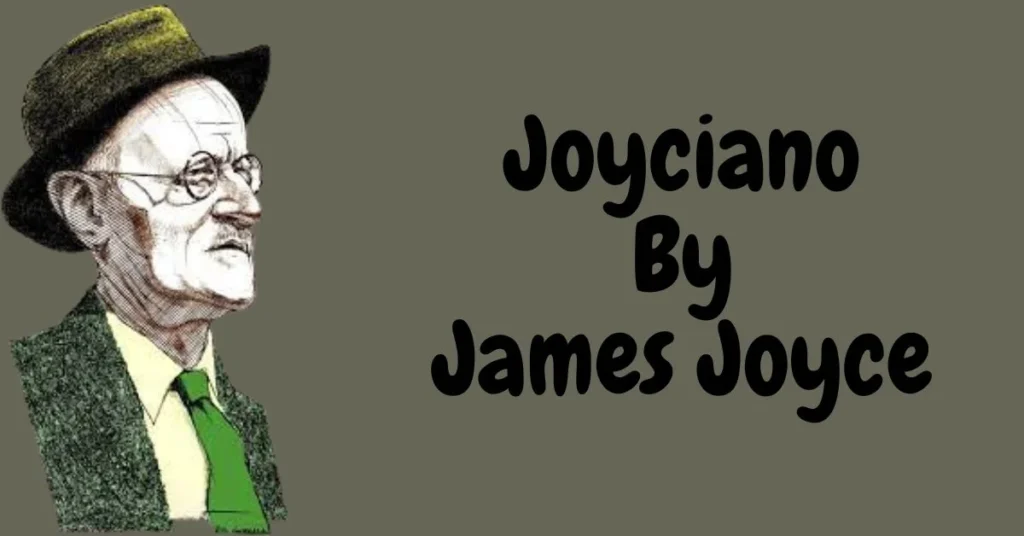James joyciano, the enduring Irish writer, has solid an extended shadow over the literary landscape. His modern and complex works have captivated and challenged readers for generations. But for the ones unusual along with his style, the term “Joycean” may be as enigmatic because of the labyrinthine narratives he crafted. This article serves as a compass, guiding you through the charming world of Joycean literature.
The Essence of joyciano
“joyciano” broadly speaking refers to something related to James Joyce, his writings, and his literary techniques. It encompasses the subject matters, stylistic factors, and normal approach to storytelling that outline his work.
Some key characteristics consist of:
Stream of Consciousness: Joyce delves into the unfiltered go with the flow of thoughts and reminiscences within a character’s mind. This creates a dynamic and often fragmented narrative, mimicking the manner we think.
Dense Symbolism: joyciano imbues his work with rich symbolism, drawing from mythology, records, and regular life. Repetitive motifs and hidden meanings add layers of intensity to his stories.
Linguistic Experimentation: joyciano performs with language, inventing words, manipulating grammar, and incorporating multiple dialects. This creates a dynamic and now and again challenging reading experience.
Historical and Cultural Context: Joyce’s paintings are deeply rooted in Irish history and way of life, however, they additionally reflect broader societal problems of the early twentieth century. Understanding those contexts enriches the studying enjoyment.
The Masterpieces
To truly grasp the essence of Joycean, we need to discover his most celebrated works:
Ulysses (1922): Considered Joyce’s magnum opus, Ulysses chronicles an unmarried day in the lifestyles of Leopold Bloom, a Dubliner, mirroring the structure of Homer’s Odyssey. It’s a sprawling, densely-layered novel that demands more than one reading to fully appreciate its richness.
A Portrait of the Artist as a Young Man (1916): This semi-autobiographical novel lines the intellectual and artistic improvement of Stephen Dedalus, a young guy grappling with faith, identification, and his preference to turn out to be an author.
Finnegans Wake (1939): Joyce’s most experimental work, Finnegans Wake is a linguistic tour de force. It blends languages, puns, and dreamlike imagery to create a cyclical narrative that defies traditional storytelling.
Dubliners (1914): A collection of quick testimonies, Dubliners paints a shiny image of early twentieth-century Dublin society, specializing in topics of paralysis, stagnation, and overlooked possibilities.
Beyond the Surface
Understanding the key elements of “Joycean” is simply step one. To admire his paintings, we need to delve deeper:
Themes and Social Commentary: Joyce’s paintings are a tapestry of topics. He explores the human situation, societal constraints, the power of language, and the look for which means. Through his characters, he evaluates Irish politics, colonialism, and the Catholic Church’s influence.
Modernist Master: joyciano is a cornerstone of modernist literature. He broke away from conventional narrative structures and embraced experimentation, reflecting the disillusionment and fragmentation of the post-struggle generation.
Influence and Legacy: Joyce’s effect on literature is simple. He inspired infinite writers together with his innovative techniques and willingness to push barriers. His paintings remain studied and debated, providing new insights to every generation of readers.
A Guide for the Curious
Approaching Joycean literature may be daunting, but with the proper technique, it can be a worthwhile revel in.
Here are a few guidelines for navigating his paintings:
Start with “Dubliners”: This series offers a terrific advent to Joyce’s fashion and subject matters. The quick testimonies are pretty on hand and offer a flavor of his genius.
Utilize Resources: Numerous online resources provide annotations, personal analyses, and historical context for Joyce’s works. These will let you decipher the complicated layers of his writing.
Join a Book Club: Discussing Joyce’s paintings with others may be incredibly enriching. Sharing interpretations and insights can liberate new meanings inside the textual content.
Embrace the Challenge: Don’t be afraid of the difficulty. While Joyce’s work needs to be attempted, the rewards are large. With every reading, you will discover new layers of which means and respect his mastery of language and storytelling.
The Final Word
“joyciano” is more than only a literary adjective. It represents a unique approach to storytelling, a global of experimentation, and a challenge to standard narrative structures. By delving into his works, you embark on a journey of discovery, confronting the complexities of the human experience and the electricity of language. So, take a deep breath, step into the Joycean labyrinth, and put together to be amazed, challenged,
